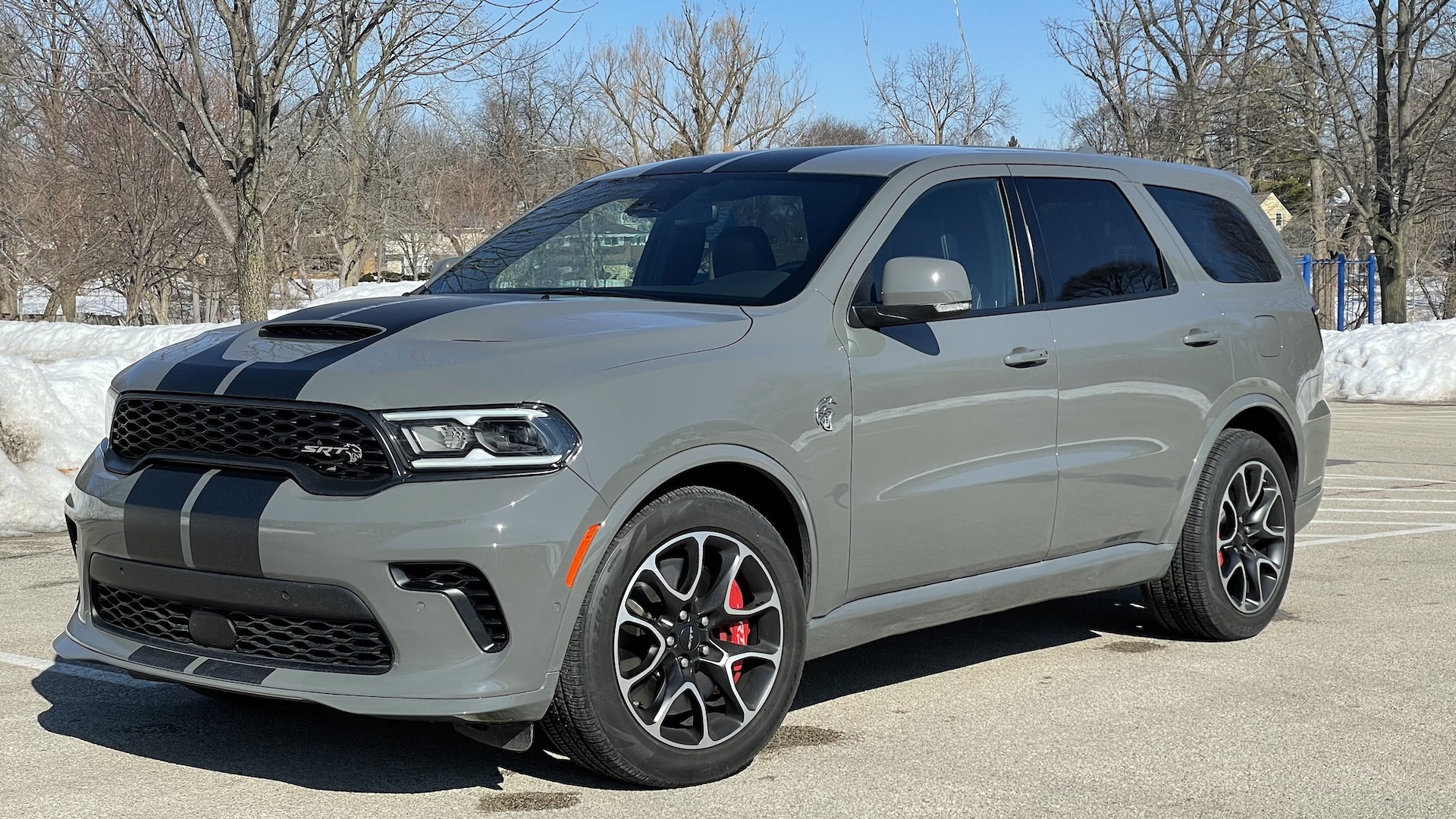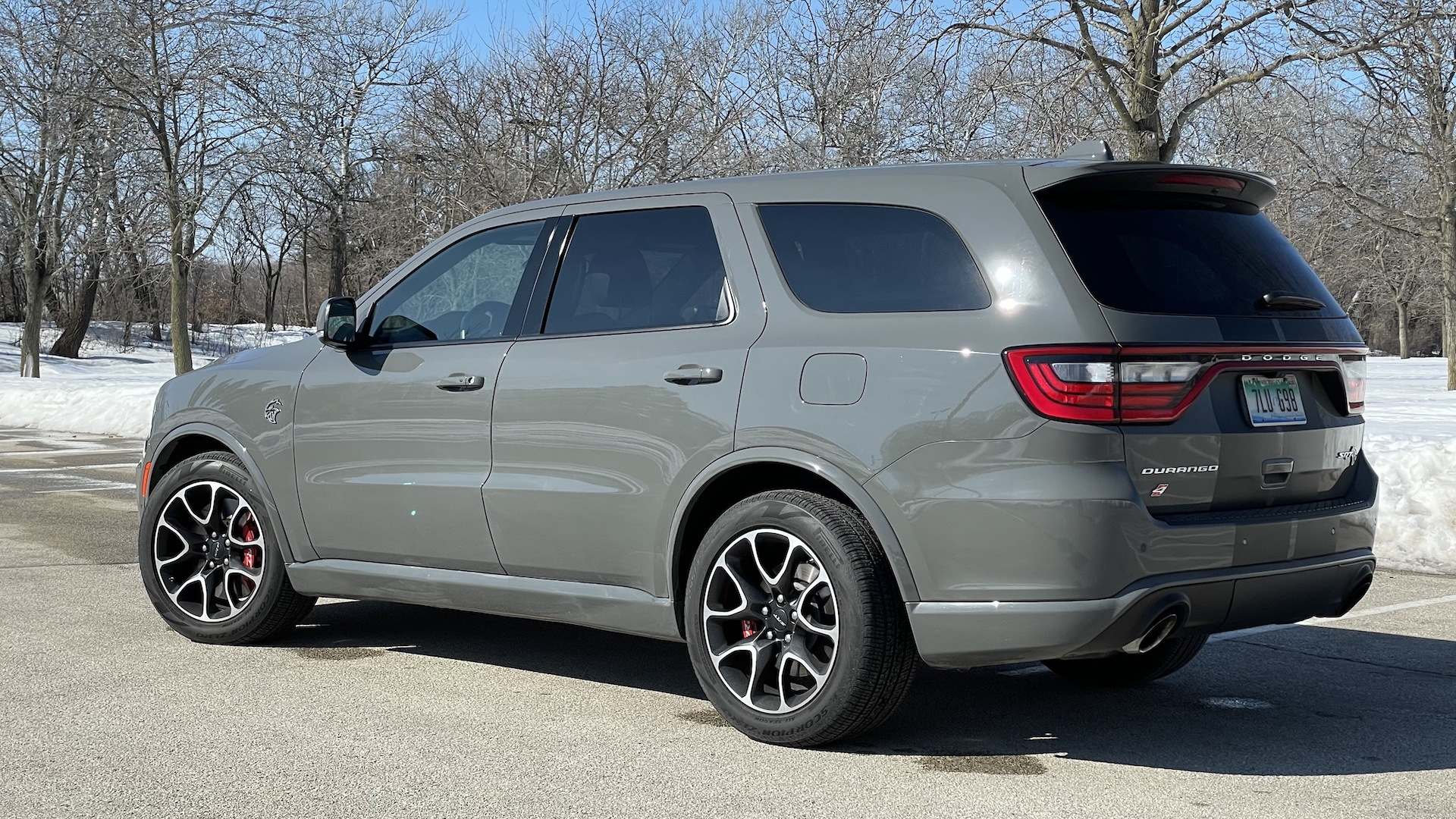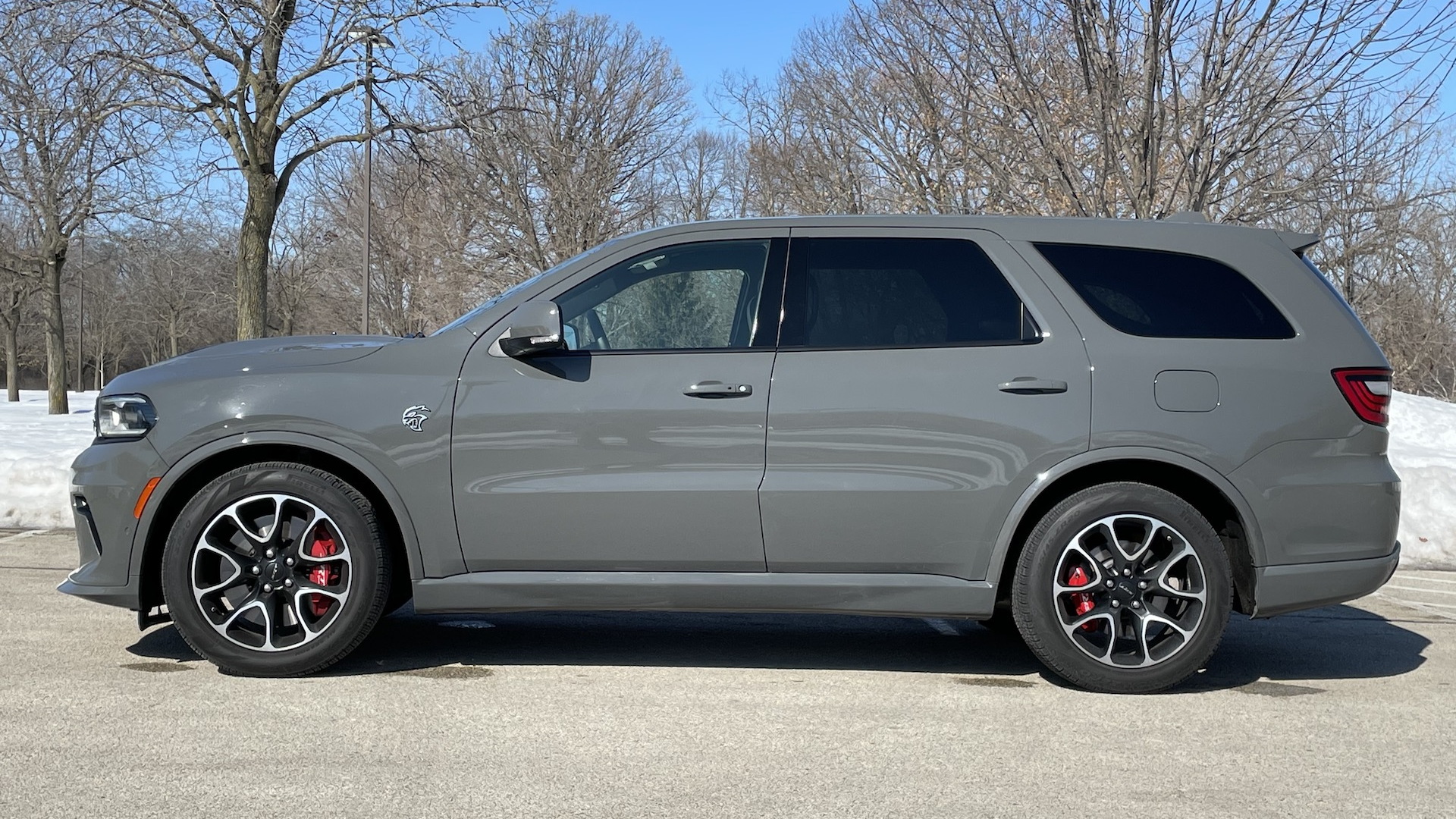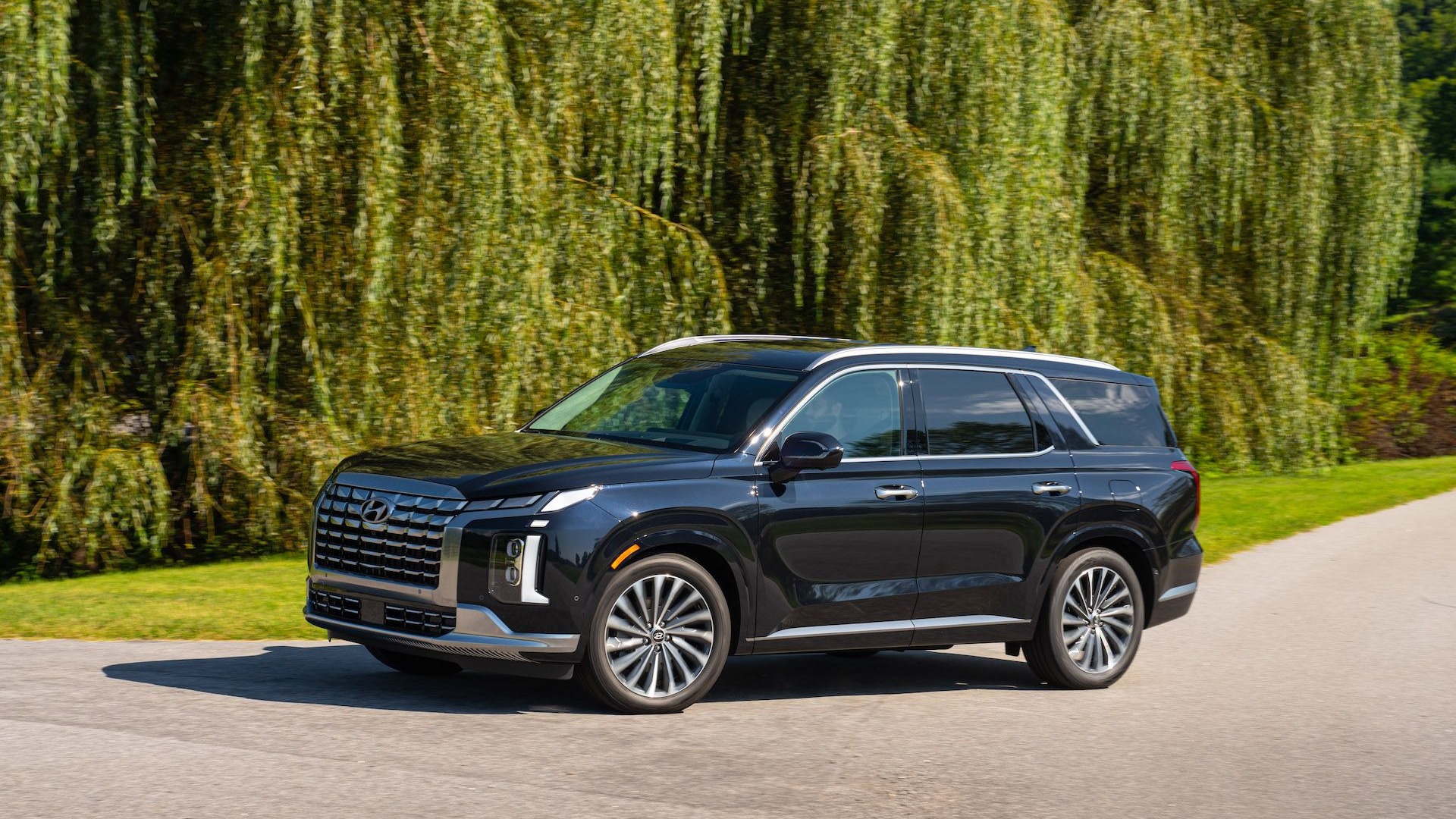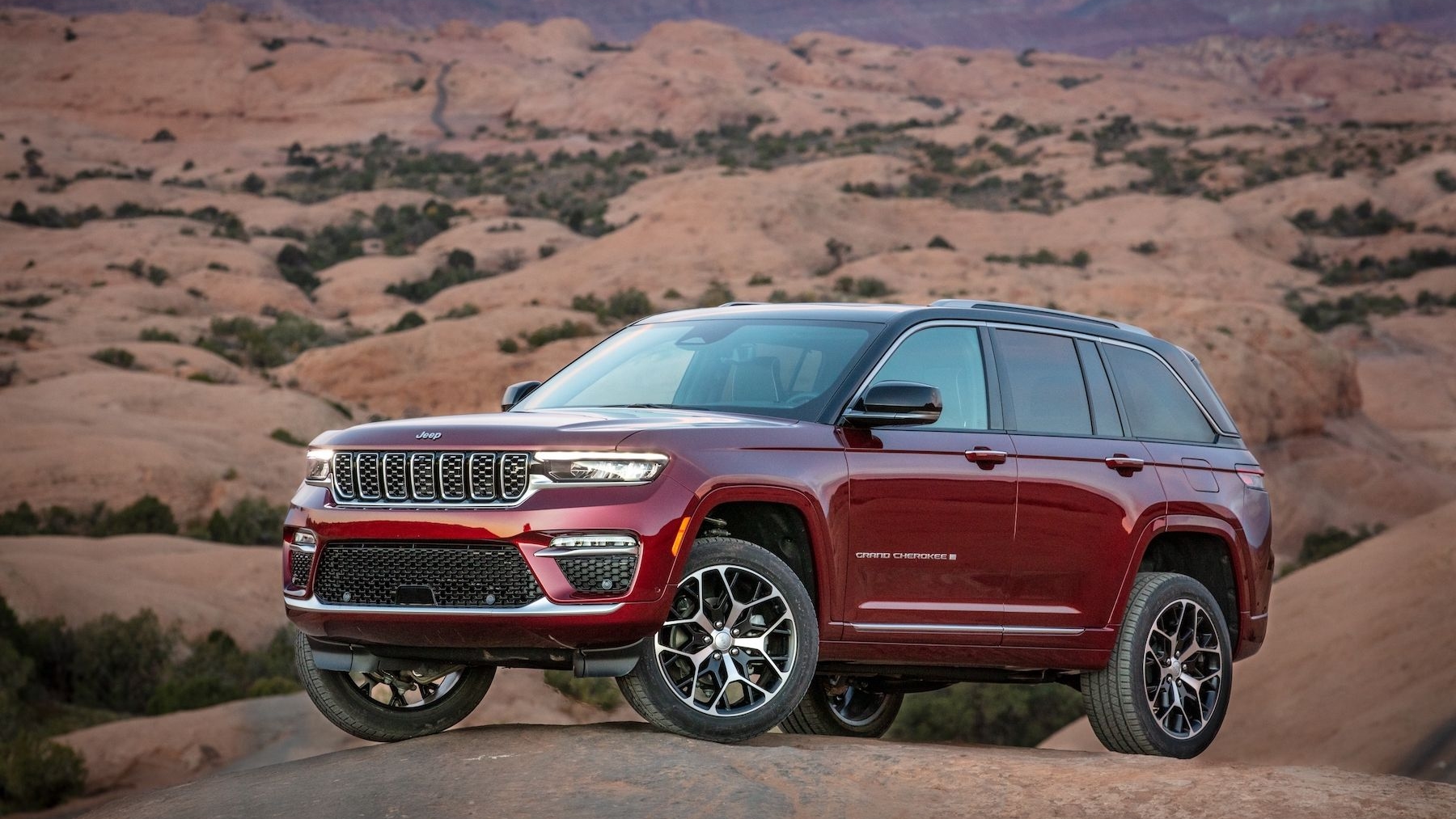We’ve all seen the meme: A defiant mouse, knowing it’s doomed, flips the bird to a menacing eagle as it swoops down for the kill. The 2021 Dodge Durango SRT Hellcat is the mouse and the forthcoming electric future is the eagle.
While automakers have scrambled to prepare for the electric revolution, Dodge has been happy to play with progressively more powerful versions of its vehicles. For 2021, the Dodge Durango gets the full-zoot Hellcat treatment, which is the most defiant act Dodge can make in the face of a greener future. The hopped up SUV is here for just one year and limited to 2,000 examples because Dodge hasn’t modernized its engine to meet emissions standards for 2022 and beyond.
One of those 2,000 defiant mice pulled into my driveway for a long weekend, and I came away both appalled by its audacity and enamored by its brutish charms.
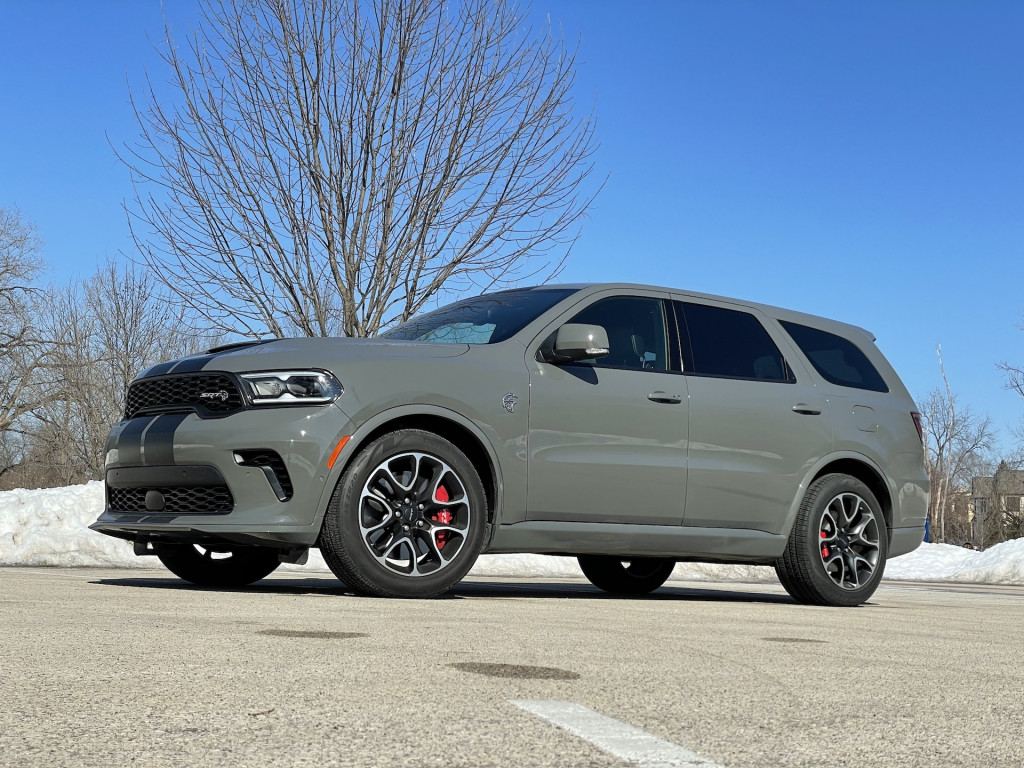
2021 Dodge Durango SRT Hellcat

2021 Dodge Durango SRT Hellcat

2021 Dodge Durango SRT Hellcat
Looks to thrill
The Durango SRT Hellcat’s looks are both subtle and assertive. Sure, it has big wheels and tires, available black hood and tailgate stripes, and a dark grille curved into a snarl, but the same can be said of the by-comparison restrained Durango SRT 392 model. The main attraction is the screaming demon Hellcat logo found on the grille, tailgate, and front fenders. It attracts the attention of enthusiasts and the kind of guys who use the turn lane to pass at stoplights. They all can’t believe you’re driving a real Durango Hellcat.
Dodge updates the look of both the Durango and the Hellcat model for 2021. The entire lineup gets cues from the Charger Widebody, with a forward-leaning grille and a revised front fascia. The Hellcat also gets a new front splitter, improved cooling for the oil cooler duct and cold air induction, and a new rear spoiler that increases rear downforce by 400%, or 140 pounds at the vehicle’s top speed of 180 mph.

2021 Dodge Durango SRT Hellcat
Power for power’s sake
It takes one crank of the ignition to learn that the Durango SRT Hellcat is likely possessed by the demon on its logos. It starts with a growl that settles into a low rumble. Goosing the throttle raises the pitch and creates urgency with accompanying supercharger whine. It’s quite intoxicating for anyone who loves a V-8.
That V-8 is the familiar supercharged 6.2-liter monster from other Hellcat models. Here it conjures 710 hp and 645 lb-ft of torque. The monster motor slams its power through an 8-speed automatic transmission and apportions it to all four wheels, which is a form of equality needed to prevent uncontrolled tire slip. The all-wheel-drive system sends up to half the power to the front in Tow and Snow modes, but it’s rear-biased otherwise, varying between 60% to the rear in Normal mode and 70% to the rear in Track mode.

2021 Dodge Durango SRT Hellcat
Dodge goes further to corral all that power to unlock a 0-60 mph sprint of 3.5 seconds and a quarter-mile time of 11.5 seconds. Those numbers are aided by both launch control and launch assist. Launch control, which is activated by a switch on the dash or by digging into the center touchscreen, manages tire slip to achieve the fastest acceleration. Launch assist uses wheel-speed sensors to monitor wheel hop and pulls back engine torque if it’s detected. The Durango Hellcat is not only quick, it can also tow a hefty 8,700 pounds.
The Hellcat engine manages to be a pussycat when I can restrain myself from dipping deep into the throttle. When my right foot inevitably seeks the floor, however, the eruption begins. Even in a cold Midwest winter, the Durango Hellcat’s Pirelli Scorpion Zero 295/45ZR20 all-season performance tires grip the pavement and rocket the 5,710-pound beast forward. It’s a rush of acceleration that kicks up endorphins with little bits of rubber.
Dodge makes all that power by strapping a 2.38-liter supercharger that maxes out at 11.6 pounds of boost to its iron-block 6.2-liter V-8. That accounts for the air in the internal combustion engine equation and a massive 92-mm throttle body dumps fuel into the cylinders. A cold air scoop up front captures air for the supercharger, and a dedicated cooling circuit for the charge air coolers keeps the engine from overheating on a track.
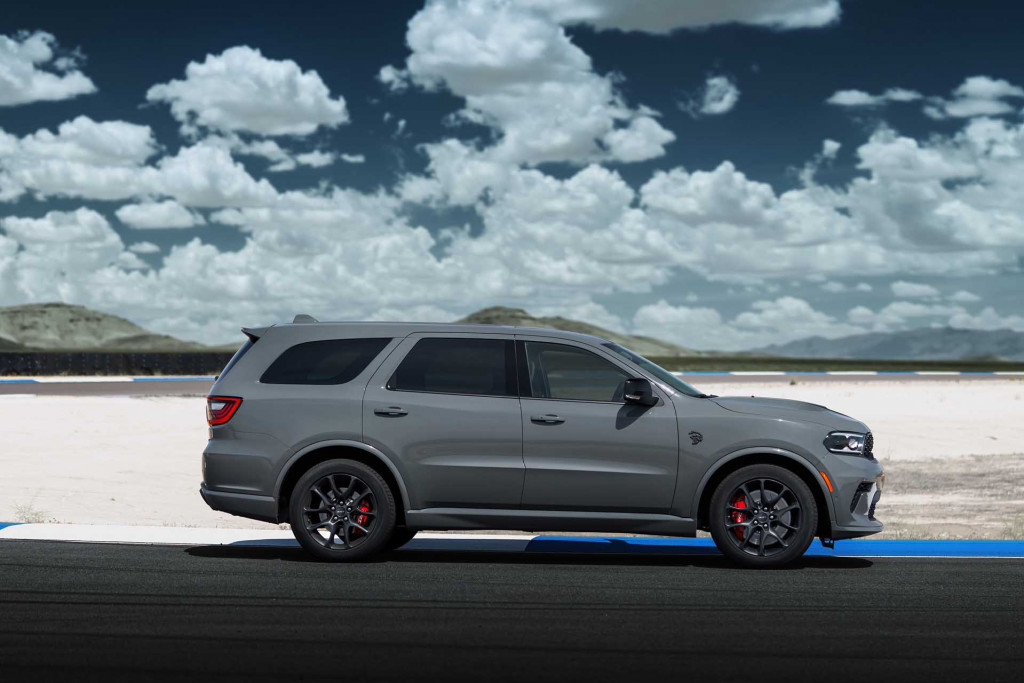
2021 Dodge Durango SRT Hellcat

2021 Dodge Durango SRT Hellcat

2021 Dodge Durango SRT Hellcat
Stiff in the knees
The Durango starts out as a three-row crossover SUV and Hellcatting it doesn’t make it much less family friendly. Sure, it’s loud, but most of us would rather listen to supercharger whine than whining children. The suspension, however, might be too much for some families.
To make the Durango both a road and track beast, Dodge started with the tuning for the Durango SRT 392 and increased the rebound control of the adaptive Bilstein dampers by 20%, and made the rear damper top mounts 18% stiffer.
Dodge claims the Durango Hellcat is more comfortable in Auto mode than the SRT 392, but it feels firmer. It can pound over bumps, and dips and swells can create a harsh jiggle that sends a shock through occupants. It’s stiff in the knees without the ability to absorb impacts I’ve experienced in other base Durangos. That tuning also helps control all that weight to send it hurtling into and out of corners on a twisty road or racetrack. It’s a tradeoff.
Dodge says the suspension changes reduce understeer by 2.5%. Even in traffic in 30-degree weather, the Durango Hellcat gives a glimpse of its capability with quick turn-in despite fairly slow steering and little body lean. I’d love to get it on a track, but its limited availability and the coronavirus pandemic mean I likely never will. Hopefully, some owners will experience the thrill of sending almost three tons of SUV careening into tight esses and down long, fast straights.
A set of big serving plates arrests the Durango Hellcat’s momentum. Up front, it has two-piece 15.8-inch rotors with 6-piston calipers, and out back reside 13.8-inch rotors with 4-piston calipers. That’s more than enough stopping power for anything you should be able to do on the street, and certainly enough for a few laps on a track, but I wouldn’t push it too long.

2021 Dodge Durango SRT Hellcat

2021 Dodge Durango SRT Hellcat

2021 Dodge Durango SRT Hellcat

2021 Dodge Durango SRT Hellcat
Comfortable cabin
The Durango SRT Hellcat’s do-everything mantra is most exemplified by its interior. The cabin is just as roomy and just as useful as a run-of-the-mill V-6-powered Durango. That means it can seat seven (rather than eight due to standard second-row captain’s chairs) and carry 17.2 cubic feet of cargo with all the seats up and 85.1 cubic feet of cargo with the second and third rows folded flat.
Up front, it’s sporty and much the same as the SRT 392 model. It gets a flat-bottom steering wheel, black nappa leather performance bucket seats with suede inserts, and red mostly analog gauges that read as sinister at night. The center screen lets me choose a drive mode, configure an individual drive mode, set the rpm for the launch control, and read SRT Performance Pages information, such as real-time power, performance timers, and additional gauges. An SRT button on the center stack is a shortcut to the Performance Pages screens.
The Hellcat’s cabin also features the changes made to all Durangos for 2021, including a larger 10.1-inch touchscreen with the Uconnect 5 infotainment system that’s five times faster than the outgoing version. Uconnect has been one of the best infotainment systems since its inception and this is the best yet.
The Durango SRT Hellcat is a do-everything three-row SUV with just three limitations: price, fuel economy, and availability. I got 12 mpg over 351 miles of mostly highway driving. That’s ridiculously low and it’s only exacerbated by the need for hi-test gasoline. It starts at $82,490, and it’s already sold out despite the price and any premiums Dodge dealers are charging for a Hellcat SUV that’s even more exclusive than the Challenger SRT Demon. A few options on my tester brought the total to $89,665. That’s a lot to pay for a decade-old family SUV, but it’s also the enthusiast’s opportunity to own a piece of an American muscle car era that won’t go gentle into the electric good night.


